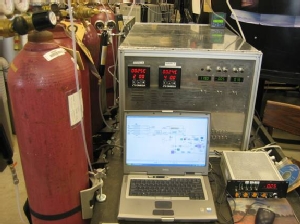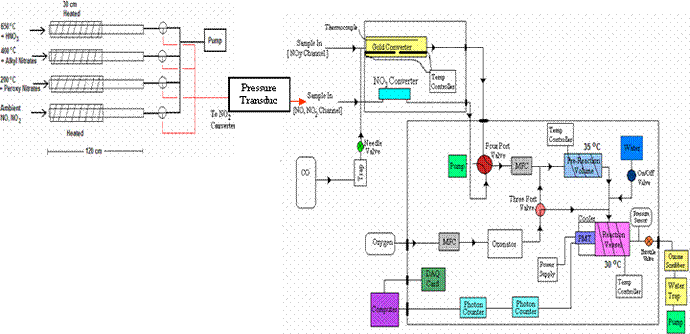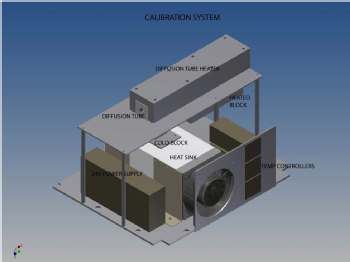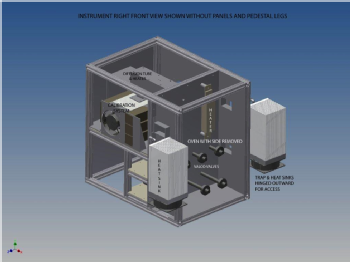Total Reactive Nitrogen Instrument

We use TRENI (Total REactive Nitrogen Instrument), an NO chemiluminescence analyzer and an inlet system, to measure NO, NO<2, NOy as well as NOz (peroxyacyl nitrates (PANs), organic nitrates (RONO2), and HNO3). The schematic diagram shows the main part of the instrument, the chemiluminescence analyzer. The chemiluminescence, produced by mixing NO and ozone, is detected by a PMT and photon counting system. The NO2 converter, a blue-light photolytic converter, converts NO2 to NO, to determine NO2. The NOy converter (Gold converter), heated gold tube, acts as a catalytic converter to convert NOy species to NO.
This instrument has a second inlet system which speciate NOy concentrations into NOx, peroxyacyl nitrates (PANs), organic nitrates (RONO2), and HNO3. The schematic diagram shows thermal decomposition inlets which are attached to the NO2 converter. 650°C, 400°C, 200°C, and ambient temperature are employed in the inlets to measure HNO3, organic nitrates, peroxyacyl nitrates and NOx, respectively (Day et al., 2002).
TRENI is used to understand the roles of NOx and NOy in fundamental atmospheric chemistry. Through chamber experiments, we investigate the relationship between NOx and the formation of aerosols, as well as the formation and fates of atmospherically relevant organic nitrates. TRENI is also used in field campaigns for high accuracy and precision measurements of NOx at the University of Michigan Biological Station.

2D-Gas Chromatograph
We are currently working with Jim Zimmerman (JAFCI, Purdue), John Seeley, (Oakland University) Tim Starn (Westchester University of Pennsylvania), and Steve Bertman (Western Michigan University) on the development on an automated two dimensional gas chromatography instrument. Our work involves the design and development of an automated calibration and sampling system. One goal of our research is to deploy a fully functional instrument in the summer of 2012 and to measure the fluxes of biogenic volatile organic compounds (BVOCs) over a prolonged period to time. From this data, we hope to obtain a better understanding of the effect that NOx has on biogenic volatile organic compound (BVOC) composition and concentration.


